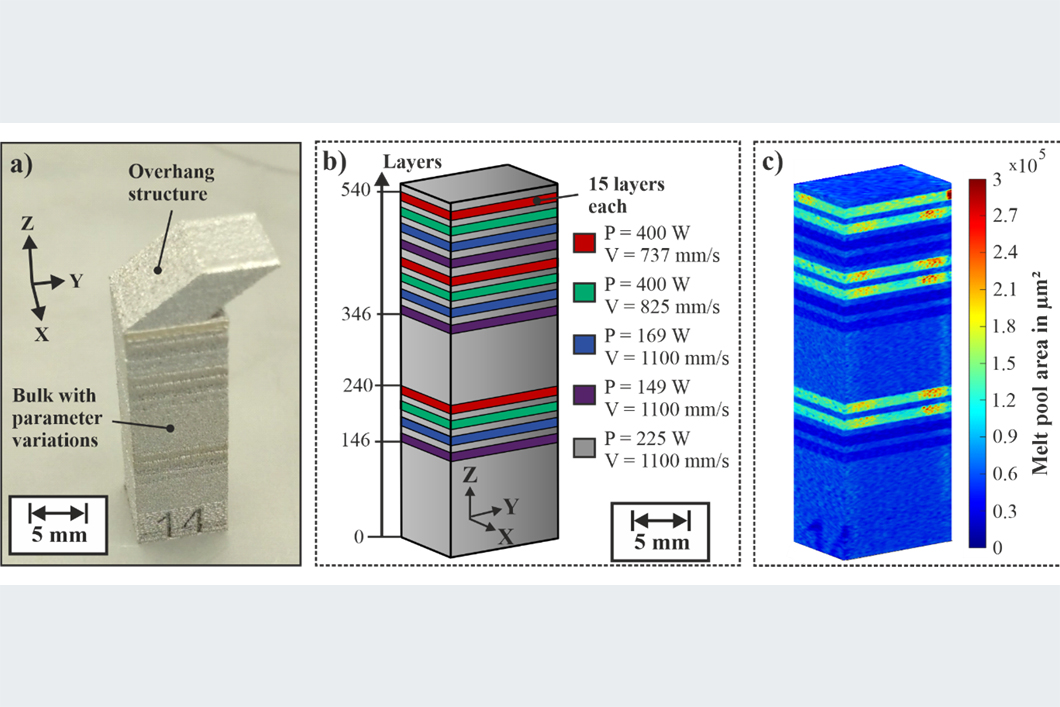
Printed component from Haynes282 powder. b) Visualization of component bulk with used parameter variations indicated by colors. c) Visualization of thermal history indicated by melt pool area feature.
Source: BAM
Laser powder bed fusion stands out as a highly promising additive manufacturing technique for producing intricate metal components with complex geometries. However, the emergence of subsurface porosity poses a notable risk to the operational lifespan of the printed parts. The integration of in-situ monitoring presents an opportunity to identify porosity during the manufacturing process. This enables real-time feedback control, allowing for prompt intervention or process adjustments to mitigate financial losses.
Short-wave infrared thermography proves effective in tracking the thermal history of fabricated parts, closely correlated with the likelihood of porosity formation. The rising prevalence of artificial intelligence methods in analyzing extensive and intricate monitoring data facilitates porosity prediction. This study focuses on exploring the potential and challenges associated with deep-learning-assisted porosity prediction through thermographic in-situ monitoring.
To achieve this, we delve into the porosity prediction task (Fig. 2), leveraging a dataset derived from the production of two Haynes282 cuboid components. Our developed 1D convolutional neural network model demonstrates solid performance (R2 score of 0.90) in predicting local porosity within discrete sub-volumes measuring (700 x 700 x 40) μm³. Notably, the regressor accurately predicts layer-wise porosity changes, although its capacity to predict variations in local porosity may be limited.
Workflow of deep-learning-assisted porosity prediction in PBF-LB/M using in-situ thermography data. Source: BAM
Additionally, our study emphasizes the necessity of examining the significance of thermogram feature inputs to streamline the model and optimize monitoring hardware. Furthermore, we identify multiple sources of data uncertainty arising from the in-situ monitoring setup, registration with ground truth X-ray-computed tomography data, and the employed pre-processing workflow. These factors may potentially impact the model's performance adversely, highlighting the need for comprehensive investigation and refinement in future applications.
Potentials and challenges of AI-assisted porosity prediction using thermography in PBF-LB/M
Simon Oster, Nils Scheuschner, Keerthana Chand, Simon J. Altenburg, G. Gerlach
Published in Technisches Messen, volume 90, pages 85-96.
BAM Non-destructive Testing
BAM Sensors, Measurement and Testing Methods
BAM Thermographic Methods


